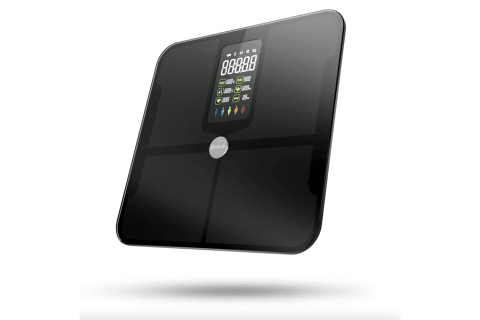In March 2020, our lives were forever changed. The effects of sheltering-in-place, staying cautious, and constantly worrying about everything from the health and wellness of loved ones, the economy, and our own well-being placed us in a space of uncertainty. We had to learn to adapt, every day. The silver lining of disruption is that, one way or another, we all had to pay attention to the present, and more importantly, to ourselves. We were pushed to reevaluate life and reconsider our personal definitions of happiness and success. These reflections reshaped our daily behaviors and also our aspirations. As these new routines took shape, new lifestyles emerged, and continue to do so. This led to so many life changes. We learned to become resilient. The key though, is to hold on to those positive new behaviors and to let go of those habits that were holding us back.
People all around the world suddenly found themselves with opportunities to explore new horizons. Outdoor activities became all the rage. Biking, hiking, boating, camping and glamping, RVing, skating, van life, hot tubbing, outdoor gyms and workouts, were suddenly not only the new normal, but the new rage. If you tried to buy sporting equipment, coolers, bicycles, spas, patio furniture, outdoor vehicles, et al, they were either priced through the roof or on serious backorder. In fact, according to the Salesforce Q1 2021 Global Shopping Index, sporting goods topped the list of product categories with the most year-over-year (YoY) growth, with sales soaring 101%.
The Rebirth of Productive Pursuits
Between 2020-2021, hobbies and constructive pastimes also skyrocketed. Whether it’s cooking, baking, gardening, painting or drawing, playing an instrument, many were finding a productive use of their time.
What new habits, skills, or activities did you learn or pick-up?
I picked up several. But mostly, my day-to-day recreation and aspirational pursuit was cooking. It was partly a matter of necessity, of course. After all, we couldn’t go out to eat or explore new cuisines, trends, or cultures like we once did or hoped to. But that didn’t mean that we were stuck cooking the basics. For years I promised myself that I would learn how to cook our favorite meals. While we supported our local restaurants during these times, I was done making excuses. What better time to start something new and productive than now. It shouldn’t have taken a pandemic to push me to invest in something that would help me expand my horizons. I learned nonetheless.
Before all of this, I used to travel around the world at least one-to-two times a week. Suddenly I was home and doing my part around the house. Cooking would be my contribution to my family and also to myself.
It turns out, I was in good company. According to Salesforce’s Shopping Index, home appliances ranked second in product growth categories, growing 96% YoY with food and beverages ranking fourth at 95% YoY growth.
In the early days of the pandemic, flour, like toilet paper, sanitizer, and disinfectant, were in short supply. Turns out, consumers took to baking their way through the pandemic. In fact, King Arthur, a prominent flour company, saw its sales skyrocket 2,000 percent.
Brent Minner, a marketing director for Hometown Food Company, which owns the White Lily, Pillsbury, Arrowhead Mills, and Martha White brands of flour, told The Atlantic that market-wide demand shot up more than 160 percent shortly after consumers started sheltering in place. “We are making the flour as fast as we possibly can and shipping it to our customers, and it’s flying off the shelves as soon as it gets there,” he revealed.
The Link Between Cooking, Creativity, Wellness, and Family Relationships
There’s more to it than learning a new skill or passing the time while stuck at home in lockdown for months on end. Cooking, baking, and other rituals became a positive coping mechanism as well as a form of self-care.
Creating, challenging ourselves, and making progress in new frontiers has been shown to generate positive emotions.
Nicole Farmer studies how food impacts our biology, behaviour and mental health at the National Institutes of Health Clinical Center. Specifically, Farmer focuses her research on the psychological and social benefits of cooking.
In an interview with the BBC, Farmer corroborated the connection between creative pursuits and wellness, “Doing things that evoke almost immediate positive emotions can help to calm stress pathways.” She went on to explain further, “Cooking represents the shared human experience of food, and nurturing people through food, so I think that’s where it incorporates opportunity for immediate positive emotions.”
Research also shows that repetitive behaviors and rituals not only ease stress and anxiety, but also activate and rewire our brains.
Farmer noted that the acts of chopping, kneading, and other acts of prep, cooking, and plating help us think and feel better. “Those activities, when we move our hands … definitely have a link to positive emotions and stress,” she stated. “When people engage in cooking, there’s an activation of the sensory system, and that activation brings in our working memory,” Farmer believes.
As I was researching the role of creativity in personal transformation in my last book, LifeScale: How to Live a More Creative, Productive, and Happy Life, I too found the powerful and positive effects of creativity and productive work on our brains, bodies, and psyche. I also learned that following one’s aspirations, especially when it’s meant to positively impact loved ones, is also a healthy practice.
Cooking for friends and family is a form of giving, selflessness, and altruism. Research shows that it’s actually “good to be good” to others and that positive activities do, in fact, increase well-being.
Giving is also a symbol of significance. The acts of cooking or baking signal to others that they matter and the investment of time, effort, and even passion can beget reciprocity and stronger connections.
One such study set out to explore the relationship between cooking and selected indicators of diet quality, mental well-being, and family relationships. Researchers found that cooking ability “was positively associated with better family connections, greater mental well-being and lower levels of self-reported depression.”
The Rise of an Accidental, Early-Adopter Gourmet
I’ve always been a sucker for cooking shows. I have been going back years. From competitions like Iron Chef, Chopped, and Beat Bobby Flay, to more personal experiences such as Giada and the Barefoot Contessa, to experiences around the world including anything by Anthony Bourdain, Diners, Drive-Ins and Dives with Guy Fieri, and Stanley Tucci’s Searching for Italy. I used to drool at their creations. Now, thanks to lockdowns, I’ve become an accidental gourmet.
As time passed, my culinary skills increased and so did my curiosity. As a geek, I was eager to learn not only about cooking recipes, but also various techniques, styles, and of course, the tools.
Beyond traditional stovetop cooking with every type of cookware from cast iron to carbon steel to ceramic and BBQ grilling and smoking, innovation in cooking tools and food tech are blowing up in popularity.
For example, I started my experimentations with learning the artistry of sous vide immersion cooking using the Anova Wi-Fi Precision Cooker.
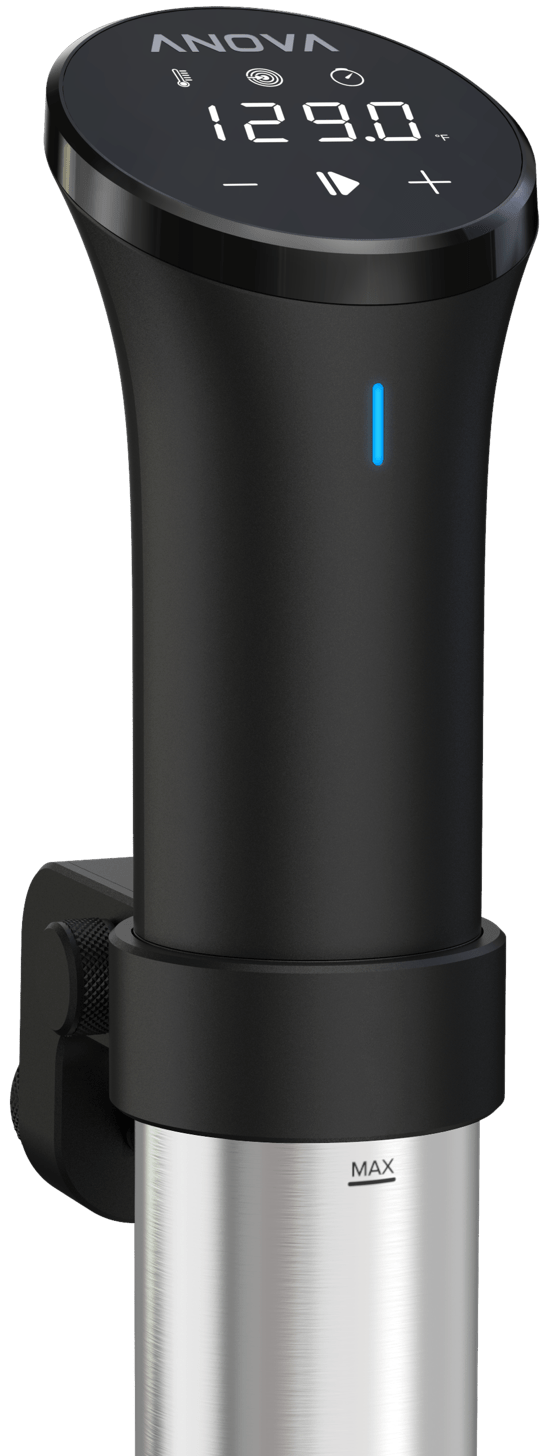
Sous vide means “under vacuum” in French. It’s the process of vacuum-sealing food in a bag and cooking it at a very precise temperature in a water bath, usually low and slow, to bring out the very best flavor and texture of your food. You can then finish by searing, grilling, or broiling the food to add a crispy, golden exterior layer.
I then ventured into wood-fired cooking with OONI ovens, specifically to learn the art of making homemade, from scratch Neapolitan-style pizzas, bread, calzones, and more. These ovens can hit an internal temperature of almost 1,000-degrees fahrenheit. Depending on the type of food, you can also dial that temperature way down. However, for pizzas, you want that oven to be nice and hot, bringing out a beautiful, crispy crust in about 60-seconds. These ovens also accommodate cast iron pans and skillets to cook anything and everything that can benefit from the heat and flavoring of wood-fired fuel.

Once you start endeavoring down delicious paths of culinary bliss, there’s no going back.
My next investment is now taking wood-fired cooking to the next level with the soon-to-be-released Dome by Gozney. More on that later.
As a side note, no matter which method of cooking you use, whether the oven or the grill or the stovetop, when it comes to proteins, under or overcooking is now a thing of the past. MEATER is a wireless, bluetooth thermometer that pairs with an app or a base station to monitor the internal temperature during the cooking process. With the app, you set the protein, the desired temp, and MEATER does the rest. It times the process, alerts you when to remove the item, and then times the resting period.

Optimizing Tech and Time without Sacrificing Quality and Possibilities
As the months turned into a year and then some, more and more consumers reported that they expect to cook at home even more one the world reopens. The same is true for me, although it’s really unimaginable to not experience restaurants and culinary comfort and innovation all around the world.
Working from home, I found myself shifting from work-life balance to something more like work-life blending. Time blurred and also became more and more precious. Cooking became the gateway to embracing other activities I long promised myself. I wasn’t ready to stop my culinary practices however. I just needed to learn how to cook creatively, explore new horizons, while also reducing prep and cleaning time. Don’t get me wrong, when there was time to relish in the entire process, from shopping to prepping to cooking to serving to cleaning, I would. With the increasing number of cooking at home days per week, the opportunity for food tech innovation is unprecedented.
My first shift toward reducing time but not quality was to sample the Mellow “sous-chef.” Mellow is a smart sous vide system that allows you to schedule the cooking cycle around meal time. You can prepare your meals ahead of time, place them in the water bath, where they’ll be cooled until the cooking process automatically starts and finishes at a time you predetermine.

To help save time with shopping and prep, I discovered Home Chef, a tailored subscription service that delivers recipe rotations for all skill levels and dietary preferences. Home Chef promotes that the service helps you save time while enjoying real home cooking and the joy that comes with it. The menu is incredibly diverse and ranges from the basics to the most advanced gourmet meals you can imagine. As scheduled, fresh, pre-portioned ingredients are delivered to your door. Unpack, follow the step-by-step recipe cards, and viola!
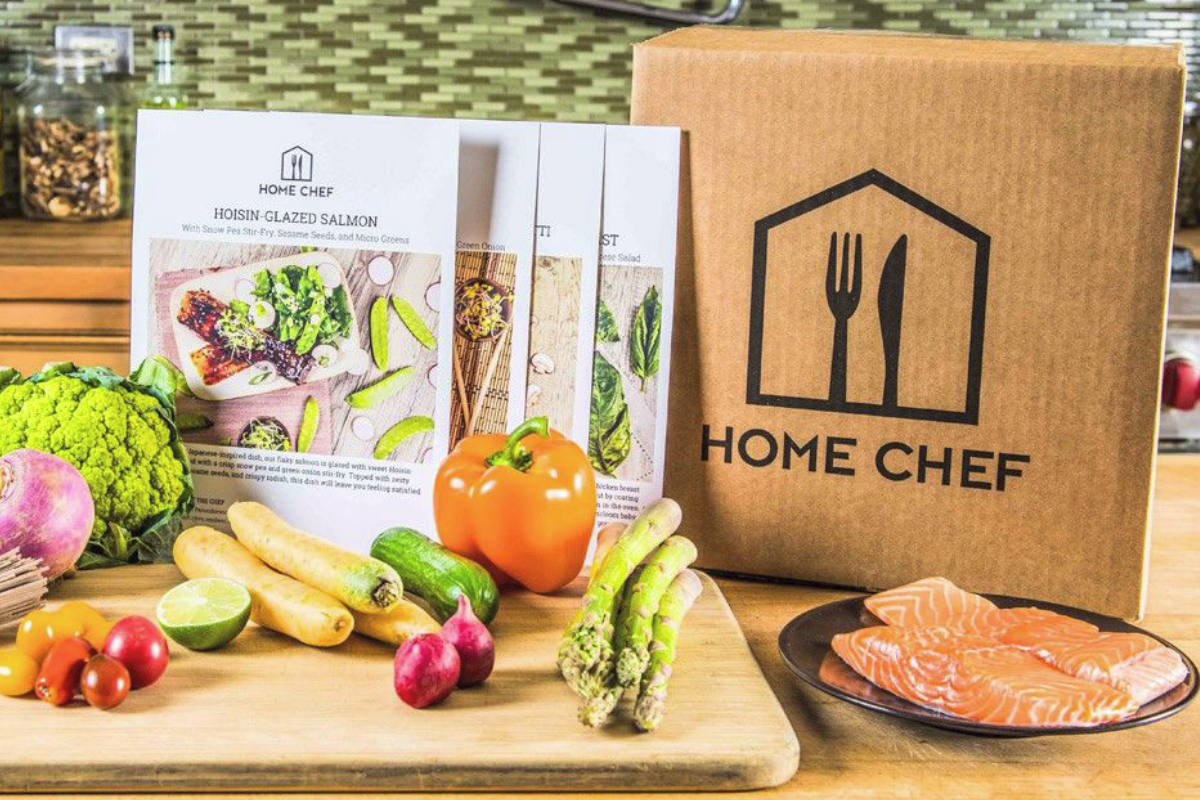
Innovative Smart Appliances Help Busy Chefs Cook a Complete Gourmet Meal at the Same Time
Once you start down the path of optimizing time without compromising output, the question that naturally arises is, “What else is possible?”
As I mentioned earlier, I’m a geek at heart. So I set out to answer that question. It just so happens that food tech is gaining momentum. Led by startups like June, Suvie, and Brava, countertop cooking appliances such as all-in-one ovens, are becoming connected, smart, and dexterous in cooking complete meals all at once, within the same device.

Each oven offers their unique approach to cooking complete meals. Partnered with an app or a built-in screen, these smart ovens target heat in zones to individually cook each ingredient, in concert, to serve an entire meal together.
The June and Brava ovens are a bit more versatile in that they can cook a variety of foods using different techniques such as air frying, roasting, toasting, slow cooking, convection, broiling, baking, dehydrating, warmin, and more. You can even cook pizzas at blazing hot temperatures like the OONI wood-fired ovens. Complete meals usually average less than 25 minutes and ingredients can go straight from the fridge to the oven without having to first bring them to room temperature.

The Suvie is unique in that it offers pre-packaged meal plans, like Home Chef, that go from the freezer to the oven in a short period of time. Each ingredient transfers from its bag to its respective tray directly for individualized cooking.
Each oven can be programmed to finish a meal at a preselected time.
Testing the Brava Oven for When Time and Performance Matter
The smart technologies built into this new genre of connected ovens all save time without compromising meal quality. Essentially, these ovens are robotic sous chefs with some reviews touting that the average family will save at least six hours per week in cooking time.
After geeking out on all of these new ovens, and more, I opted to bring the Brava home. The choice came down to aesthetics (it had to fit my kitchen as a countertop device) cooking technology, user interface design on the device and in the app, and the capability to cook the special meals we love. After spending an entire year learning how to cook and experimenting with appliances, gear, and techniques, Brava’s recipe library and digital step-by-step instructions were a standout feature for me. Cooking and eating are experiential. The fact that Brava employs five full-time chefs who program the menus, and are also available for 1:1 Q&A for premium subscribers, made me feel like I was part of a special community.
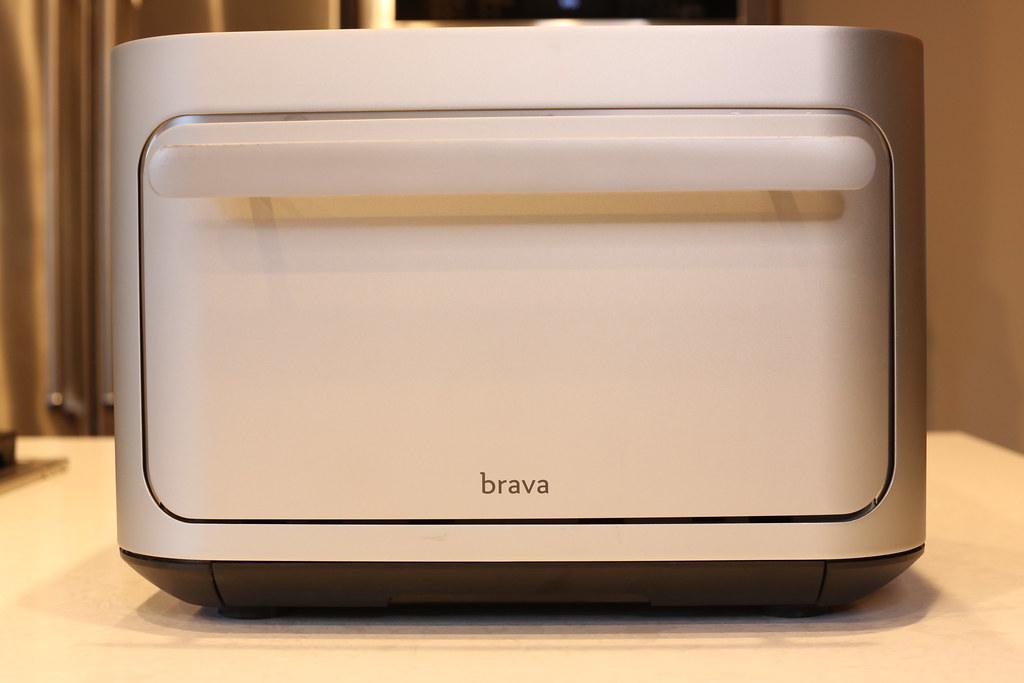
At its core, Brava uses “Pure Light Cooking” technology originally developed in the solar industry. These specialized lights cook food on different sections of a tray to different temperatures, cooking ingredients individually, but at the same time, to prepare a complete meal quickly and efficiently. Every item comes out as if they were cooked separately, but the magic lies in Brava”s ability to target cooking zones with the right amount of heat, on all sides, to deliver a delicious meal that only needs plating.
It’s this cooking with light that allows Brava to achieve a blend of speed and consistency. By pairing this technology with Brava’s chef-developed recipe programs, this smart oven becomes a one-stop cooking solution that turns anyone into a successful chef, every time.
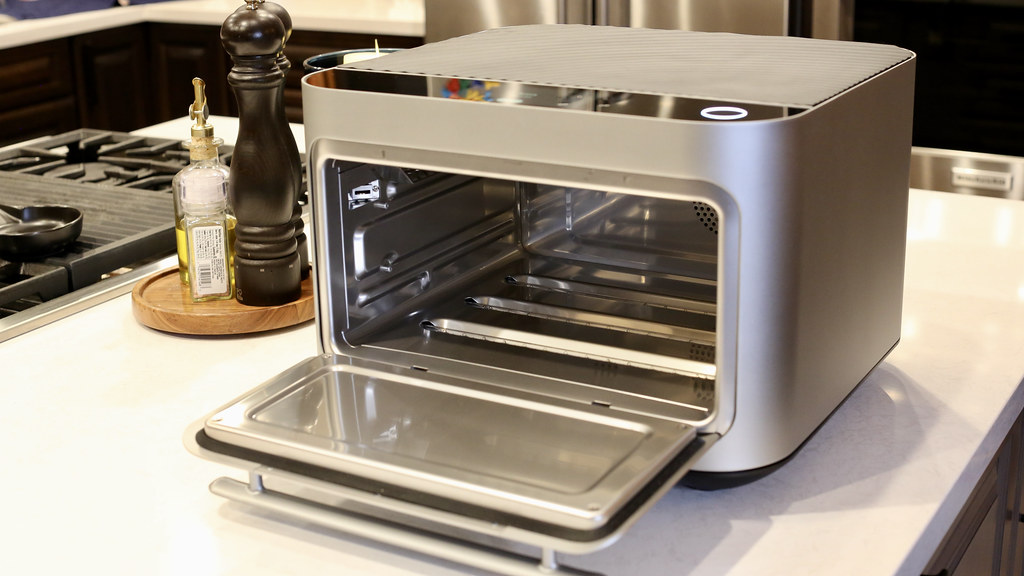
Brava features a large screen that offers chef-powered services to bring out the best in your ingredients. The oven walks you through, step by step, how to cook every meal.
Browse the incredibly intuitive, diverse, and global menu using the large screen on the oven or via the Brava app. It walks you through prepping the ingredients, where to place them on one of the specialized trays available for the oven, and everything starts by pressing one button.
Once you start the oven, the camera turns on to visualize the process on screen and also projects to the app so you can follow along. Time to completion is also displayed so you can multitask while everything’s coming together. As the meal is almost finished cooking, the app sends an alert to get ready for plating.
Brava empowers you to cook what you want, when you want, regardless of your time or technique. Brava takes care of the cooking, so you can take care of everything else. However, you’re still in control of your doneness to bring things to your liking.
The Brava experience is offered in three different flavors. You’re not investing in Brava to save money compared to traditional cooking. You’re investing in time savings, convenience, and the value of the finished product.
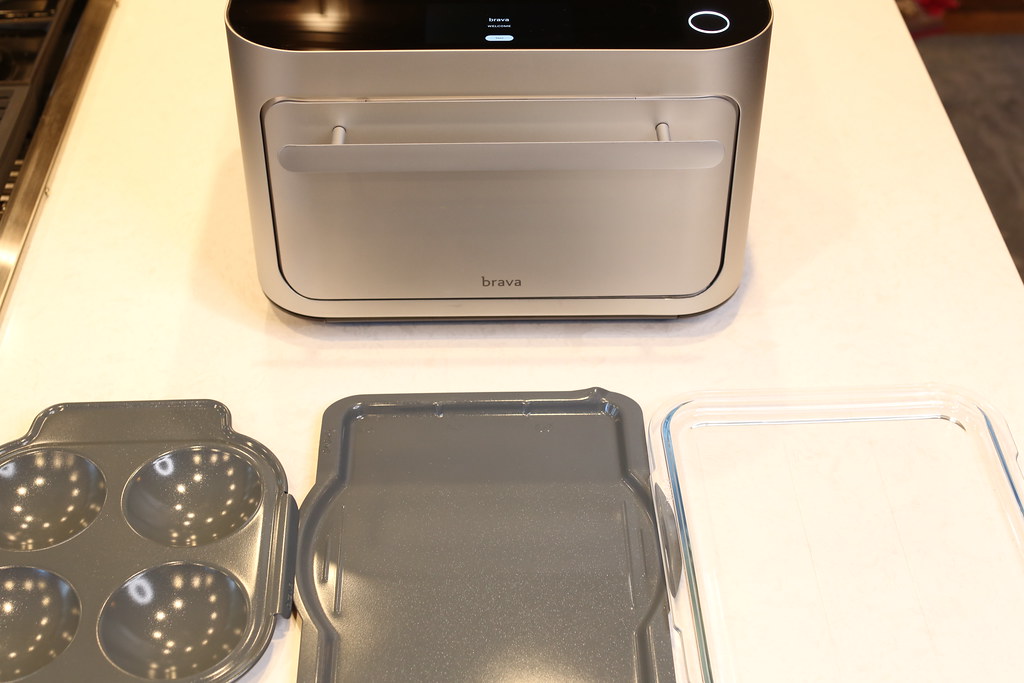
The starter set includes everything you need to start cooking countless gourmet meals, the partitioned glass tray, metal tray, and an integrated temperature sensor (this is how it tracks progress in cooking proteins). The other two sets offer baking trays, an egg tray, and a porcelain chef pan. All options include two years of Brava Plus Membership, a premium recipe program, with chef support, customized preferences, upgrades, and discounted accessories.
I should also note that Brava isn’t just for those with an insatiable palate. It can also help singles and families with cooking simple meals…still, with all the fun. There’s time savings whether it’s for a gourmet meal or a simple one.
To offer a glimpse into the experience, I recorded my first attempt at using the Brava to demonstrate its capabilities and also document how easy it is to use right out of the box.
In this video, I kept it simple, choosing a blackened chicken breast and potato recipe. Within ~20 minutes, the entire meal was complete, and scrumptious. If you add the 10 minutes of prep time, you’re looking at 30 minutes total for a complete meal.
Here are the before, during, and after pictures (more pictures here):



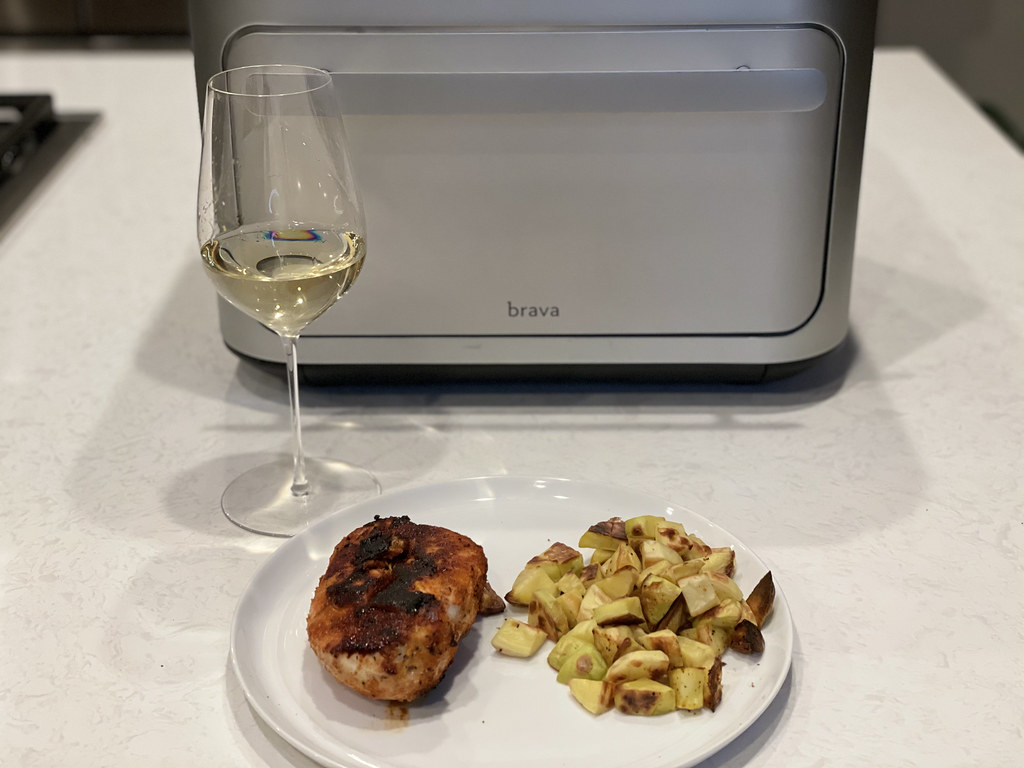
Now Serving the Final Course
With the great re-emergence on the horizon, many new at-home chefs, like me, will continue to cook beyond the basics. After all, the home has become, by default, a dedicated, trendy new restaurant just for you!
As a self-proclaimed cooking geek, I’ll only continue to explore new food technologies as they emerge. Contrary to the reviews that claim that smart home ovens “teach you nothing about cooking,” they do teach you how to appreciate a broader horizon of well-cooked meals we might not have otherwise attempted in the home. The bottom line is that smart cooking grows one’s confidence in attempting to prepare new and even more complex cuisines. Doing so expands the palate and inspires more experimentation.
Food tech won’t take away from my practice of cooking. The health and wellness, not to mention the creativity benefits, are transformative. They help us grow and cultivate new talents and capabilities. They teach us that we can accomplish anything if we invest in ourselves, the experience, and what we create for loved ones. That’s a growth mindset in times of disruption, and, prosperity.


